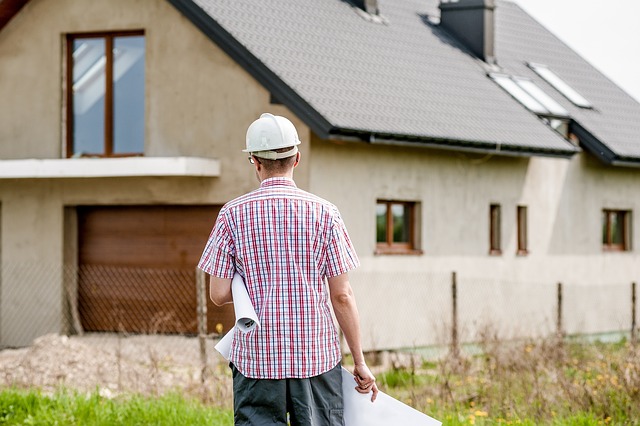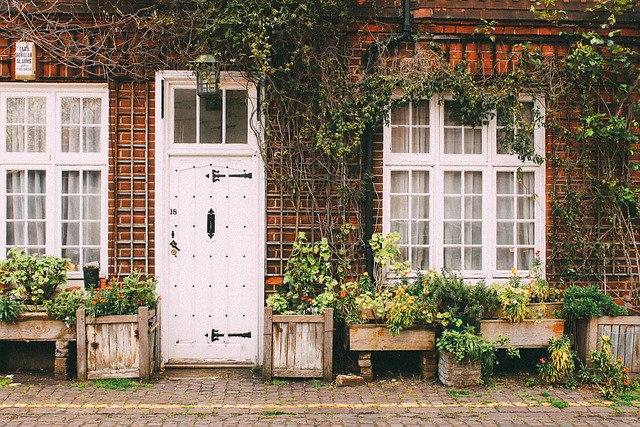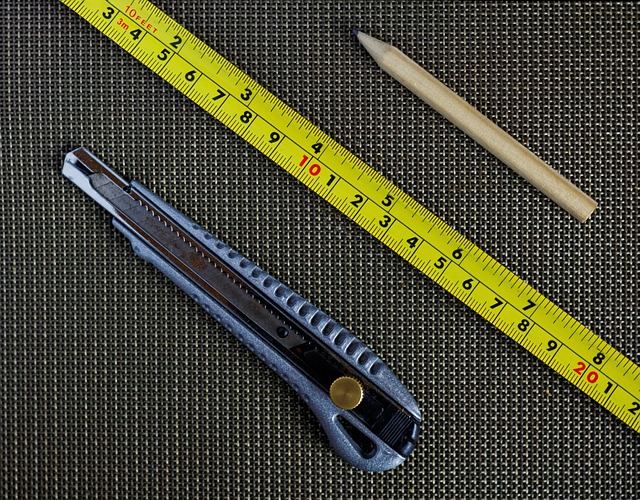Homeowners should be aware of the potential pitfalls and risks associated with various DIY repair tasks, particularly electrical repairs which can cause fire hazards or malfunctions if not handled properly. Plumbing issues can quickly escalate to significant water damage or sewage problems if improperly managed. Roof repairs require precise sealant application and suitable materials to prevent ongoing water ingress and potential structural damage. Adequate surface preparation is essential for successful painting projects, as poor workmanship or subpar products can lead to peeling or blistering paint. Insulation that's not properly installed can result in energy inefficiency and increased utility costs. It's crucial for homeowners to approach each repair with the right tools, knowledge, and materials to avoid costly mistakes. For complex repairs or when safety is a concern, consulting professional advice or hiring experts in Home Repair and Maintenance is highly recommended to ensure the safety, longevity, and functionality of the home.
In the realm of electrical DIY, it's important to proceed with caution due to safety concerns. Many issues like non-functioning light switches or flickering lights can be resolved by following systematic steps outlined in Home Repair and Maintenance protocols. Always ensure to verify circuit breaker status and use a voltage tester before handling wiring to prevent electric shock. If a light switch is unresponsive but power is present, turn off the corresponding circuit breaker, inspect for loose connections or damage, and retest after securing any loose wires. For flickering lights, check bulb compatibility and wiring looseness, and if these steps don't resolve the issue, professional electrical expertise should be sought.
For DIY plumbing issues like leaky faucets or clogged drains, immediate action is crucial to prevent water damage and mold growth. Regular maintenance checks are recommended to catch small problems before they escalate into major issues. Professional home repair services can provide effective solutions for persistent leaks with techniques like pipe relining, and for serious clogs, hydro jetting can be employed. These services ensure the safety and functionality of a home's plumbing system.
When DIY woodworking projects encounter issues such as gaps or misaligned joints, it's important to address them methodically to prevent additional problems. Clean the area thoroughly before using wood filler for gaps and carefully realign and clamp joints for misalignments. For more extensive repairs, evaluate the damage for repairability, remove damaged material, and adhere surfaces with glue, ensuring a professional finish after drying and sanding. Throughout all Home Repair and Maintenance tasks, precision and patience are key to achieving long-lasting results.
When tackling home repairs, even the most well-intentioned DIY projects can sometimes lead to unexpected complications. Whether it’s a flickering light that refuses to stabilize or a leaky faucet that won’t quit, handling these issues often requires more than a quick fix. This article navigates common DIY mishaps in home repair and maintenance, offering practical, step-by-step solutions for electrical hiccups, plumbing emergencies, and woodwork malfunctions. By addressing these problems effectively, you’ll ensure your home remains a safe and comfortable space. Dive into the guidance tailored to transform your DIY failures into expert fixes, all within the realm of home repair and maintenance.
- Identifying Common DIY Gone Wrong Scenarios in Home Repair and Maintenance
- Step-by-Step Solutions for Faulty Electrical Fixes
- Addressing Plumbing Mishaps: When DIY Leads to More Than Just Water Flowing
- Mastering Carpentry Corrections: How to Fix Woodwork Woes Without Further Damage
Identifying Common DIY Gone Wrong Scenarios in Home Repair and Maintenance

When embarking on home repair and maintenance projects, even the most well-intentioned homeowners can encounter DIY mishaps. It’s crucial to recognize common scenarios where things may go awry. For instance, electrical work is a task that should be approached with caution due to the inherent risks involved. Homeowners often attempt minor wiring fixes without fully understanding the potential for fire hazards or electrical malfunctions. Similarly, plumbing issues can escalate rapidly if not addressed properly, leading to water damage or more complex problems like sewage backups. Another frequent error occurs with roof repairs; while fixing a leak might seem straightforward, improper sealant application or choosing inadequate materials can result in ongoing water ingress and structural concerns.
In addition to these, painting projects can sometimes turn problematic if surfaces aren’t adequately prepared. Peeling or blistering paint is often a sign of previous work not done correctly, such as failing to remove old layers or using poor-quality paint. Additionally, improperly installed insulation can lead to energy inefficiencies and higher utility bills. It’s important to assess each repair task carefully, ensuring that one has the right tools, knowledge, and materials at hand to avoid a DIY disaster. When in doubt, consulting with or hiring a professional for complex home repair and maintenance tasks can prevent costly mistakes and ensure the longevity and safety of your home.
Step-by-Step Solutions for Faulty Electrical Fixes

When encountering electrical issues within your home, it’s crucial to approach the situation with caution due to the inherent risks involved. Home Repair and Maintenance often dictate that faulty wiring or outdated fixtures can be remedied with careful step-by-step solutions. For instance, if a light switch is not functioning properly, begin by checking the circuit breaker to ensure it has not tripped. If the breaker is fine, use a voltage tester to confirm power at both the switch and the outlet. Should the tester indicate the presence of power but the switch remains unresponsive, proceed to shut off the circuit breaker that supplies power to the affected switch. This safety measure prevents electric shock when you remove the switch plate, access the wiring, and inspect for loose connections or damaged components. Reattach wires securely, making sure all connections are tight and properly insulated, then test the switch again. If the problem persists after these steps, consider consulting a licensed electrician to avoid further damage or injury.
Similarly, if you’re faced with a flickering light that dims or brightens unexpectedly, this could signify an overloaded circuit or a loose connection. Home Repair and Maintenance guidelines suggest starting with checking the bulb type and wattage for compatibility with the fixture. If the bulb is correct, inspect the wiring for any signs of looseness. If everything appears tight, the issue might lie within the electrical system itself, which could necessitate replacing the light switch or circuit breaker. As with all electrical repairs, it’s important to switch off the power supply at the circuit breaker before attempting any fixes. Adhering to these step-by-step solutions can often resolve common electrical issues, ensuring your home remains safe and functional. For more complex problems, always prioritize professional assistance to ensure all work is performed safely and effectively.
Addressing Plumbing Mishaps: When DIY Leads to More Than Just Water Flowing

When a plumbing issue arises from a well-intentioned DIY project gone awry, it’s crucial to address the problem promptly to prevent further damage and ensure home safety. A leaky faucet might seem minor, but over time, it can lead to significant water waste and potential mold growth if not properly fixed. Similarly, a clogged drain can escalate from a slow drain to an overflowing disaster, causing extensive water damage to your floors and walls. In such scenarios, professional home repair and maintenance expertise is invaluable. A certified handyman has the tools, knowledge, and experience to accurately diagnose the issue, whether it’s a faulty washer in a faucet or a blocked sewer line. They can effectively implement long-term solutions, using techniques such as pipe relining for persistent leaks or hydro jetting for severe clogs. By entrusting these tasks to professionals, homeowners not only protect their property from costly repairs but also ensure the continued functionality and comfort of their living spaces. Regular maintenance checks are also a prudent step in preventing DIY plumbing mishaps from escalating, helping homeowners stay ahead of potential issues before they become major problems.
Mastering Carpentry Corrections: How to Fix Woodwork Woes Without Further Damage

When DIY woodwork endeavors take a turn for the worse, it’s crucial to approach corrections with care to avoid exacerbating the issue. Home Repair and Maintenance practices often require a stead hand and a strategic mindset. A common woe in carpentry is dealing with gaps or misaligned joints. To address these issues, start by cleaning the area thoroughly to ensure a good bond. Use wood filler to fill in gaps, applying pressure to create an even surface. For misaligned joints, gently remove any loose material and realign the pieces as closely as possible without forcing them. Clamps can be instrumental here, providing the necessary tension while the glue sets. Once the filler or glue has cured, sand the area smooth, taking care not to overdo it and inadvertently weaken the wood.
For more complex carpentry corrections, such as repairing a broken board or splintered edge, assess the extent of the damage before proceeding. If the board can be salvaged, clean the broken edge with a chisel and sandpaper, ensuring a clean, flat surface. Apply wood glue to both surfaces you’re joining, then clamp them in place, aligning them precisely. Wipe away any excess glue and allow it to dry completely. After the glue has set, sand the repaired area until it blends seamlessly with the surrounding woodwork. Always remember that patience is key; rushing can lead to further damage. With the right approach and tools at hand, homeowners can effectively execute Home Repair and Maintenance tasks, ensuring their carpentry not only looks professional but also stands the test of time.
When a DIY project takes an unexpected turn, it’s reassuring to know that handyman solutions exist for those common home repair and maintenance mishaps. This article has outlined scenarios ranging from faulty electrical fixes to plumbing disasters, and carpentry corrections, providing step-by-step guidance to address each issue effectively. Homeowners can now confidently tackle these problems head-on, ensuring their homes remain safe and functional. When in doubt or faced with complex repairs beyond one’s expertise, the advice is clear: call a professional handyman for tailored solutions. Remember, the goal of home repair and maintenance is not just to fix what went wrong but to enhance the longevity and quality of your living space. With the right knowledge and resources, turning a DIY failure into a success is within reach.
